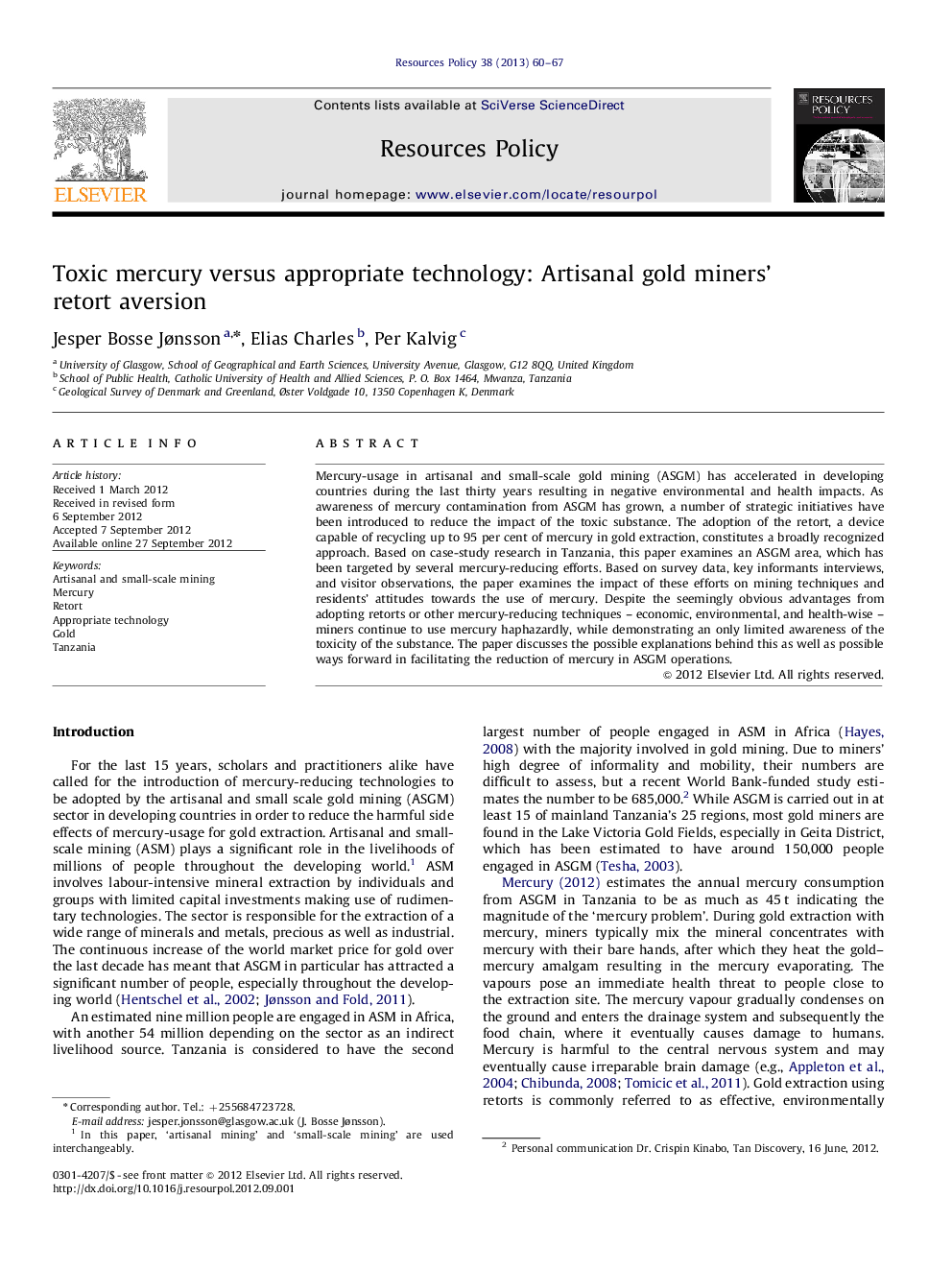| Article ID | Journal | Published Year | Pages | File Type |
|---|---|---|---|---|
| 986319 | Resources Policy | 2013 | 8 Pages |
Mercury-usage in artisanal and small-scale gold mining (ASGM) has accelerated in developing countries during the last thirty years resulting in negative environmental and health impacts. As awareness of mercury contamination from ASGM has grown, a number of strategic initiatives have been introduced to reduce the impact of the toxic substance. The adoption of the retort, a device capable of recycling up to 95 per cent of mercury in gold extraction, constitutes a broadly recognized approach. Based on case-study research in Tanzania, this paper examines an ASGM area, which has been targeted by several mercury-reducing efforts. Based on survey data, key informants interviews, and visitor observations, the paper examines the impact of these efforts on mining techniques and residents’ attitudes towards the use of mercury. Despite the seemingly obvious advantages from adopting retorts or other mercury-reducing techniques – economic, environmental, and health-wise – miners continue to use mercury haphazardly, while demonstrating an only limited awareness of the toxicity of the substance. The paper discusses the possible explanations behind this as well as possible ways forward in facilitating the reduction of mercury in ASGM operations.
► There are seemingly advantages from adopting retorts for mercury reduction in artisanal gold mining. ► Despite support schemes, however, artisanal miners continue to burn their gold–mercury amalgams in open air. ► The main reasons to this are: Intermittent support efforts dependent on external funding. ► An underestimation of the challenge of introducing new technology.
